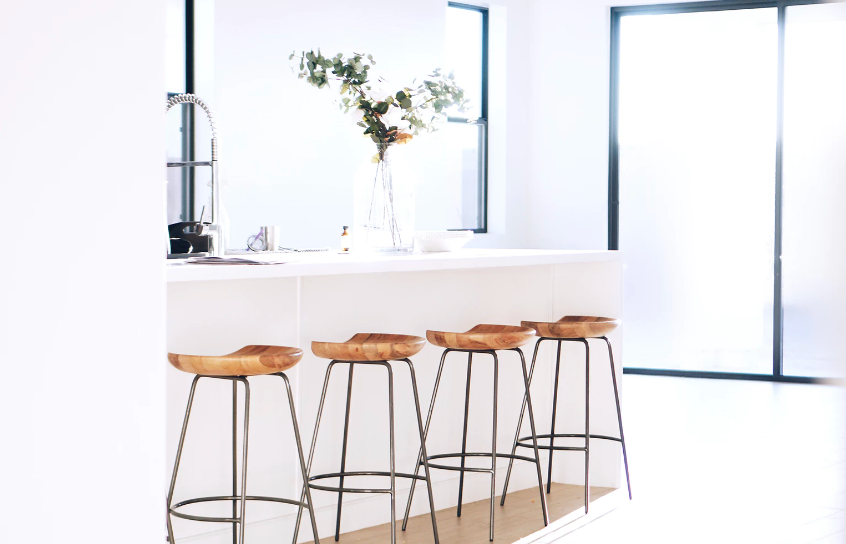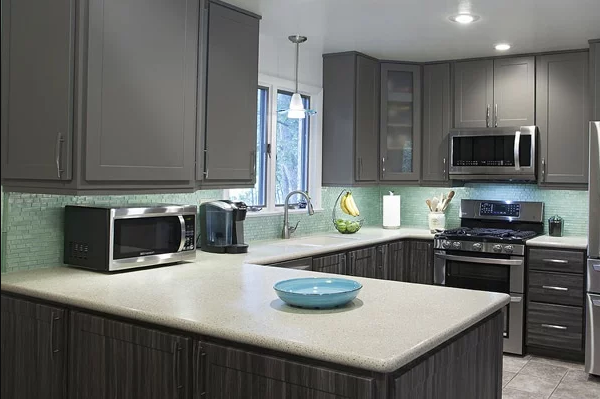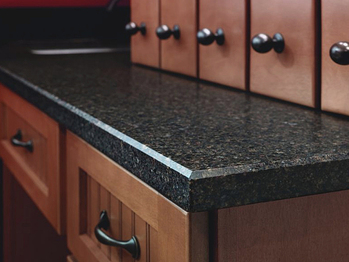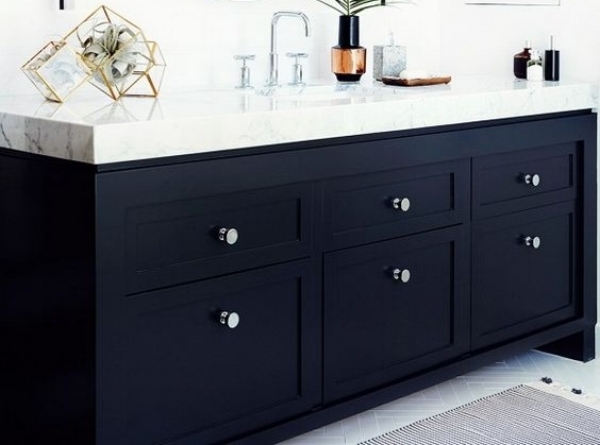Ever wondered how to tell the difference between countertop edges? Or what type of countertop edges will work best in your kitchen? This often-overlooked topic is more important than most people realize, so we’d like to share some details about countertop edges – pros and cons.

Countertop edges pros and cons
#1: Square edges
A square countertop edge is a simple but effective way to finish your countertop edges.
Pros and cons
Let’s start with the good parts.
- Square edges go with just about any type of countertop or home style.
- They fit in well with a contemporary theme.
- They’re inexpensive, which means they’re a good option if you’re on a tight budget.
- You won’t cut yourself on a square edge.
- A countertop with square edges is less likely to sustain damage.
There’s not too many bad things to say about square edges, but for those who are specific about a luxurious home style, this might be an issue:
- If you’re looking for something that stands out and looks expensive, square edges probably aren’t the best choice. Yes, they’re beautiful and contemporary, but not exactly “fancy.”
#2: Bullnose edges
The bullnose edge is a little nicer than the square edge.
Pros and cons
First things first, why should you consider a bullnose edge for your countertop?
- This edge is about as safety-oriented as they come. Many parents choose the bullnose edge because young children won’t cut themselves on it.
- Like we said, bullnose edges are a little nicer than square edges. They’re also a welcome addition to any contemporary home.
- Bullnose edges also help prevent damage to your countertops.
Of course, there are also some drawbacks to bullnose edges.
- If you spill water on your countertop, it’s more likely to spill over the edge before you can clean it up.
- Wiping down a countertop with bullnose edges is easier said than done. Instead of simply wiping the crumbs into your cloth, you’ll often end up wiping them beneath the edge of the counter.
#3: Half bullnose & demi-bullnose edges
If you want bullnose edges but aren’t sure about the disadvantages, half bullnose is the way to go.
Pros and cons
Is half bullnose right for your home? These points should help you answer that question.
- This countertop is still very safe because of its rounded top edge.
- Water spills won’t travel over the edge as easily.
- Half bullnose edges make your countertop much easier to wipe down.
- They’re a look you’ll love in your home.
- Perhaps best of all, half bullnose edges are probably within your price range!
Disadvantages of half bullnose edges:
- They’re not as kid-friendly as bullnose edges. While it’s not likely that anyone will get hurt on half bullnose edges, it’s even less likely on bullnose edges.
- Since this type of edge is fairly mainstream, it’s not quite a luxurious choice.
Demi-bullnose: pros and cons
Demi-bullnose edges are just like half-bullnose edges except that the curve of the rounded edge isn’t as steep.
Pros
- Bullnose edges sometimes make a countertop look too narrow. Demi-bullnose edges will take care of that problem.
- They’re affordable.
- If you think the grain of your countertop should be on display, these edges are the way to go.
- The design of this edge helps keep water from spilling over the edge of the countertop.
Cons
- Demi-bullnose still isn’t bullnose, and for some people, bullnose edges are a way to show off their countertops a little more.
#4: Beveled edges
Perhaps beveled edges are a good option for your countertops.
Pros and cons
Let’s take a look at some advantages of beveled edges.
- This type of countertop edge goes well in many different types of kitchens. For example, both modern and rustic kitchens work well with beveled edges.
- Countertops with beveled edges are easier to clean.
- Finally, the design of these edges means that if water spills on the countertop, it’ll drip down to the floor instead of directly towards your cabinets.
What about the disadvantages?
- Beveled edges are pretty standard, meaning that they aren’t a significant upgrade to a countertop.
#5: Mitered edges
Mitered edges are very similar to square edges, but they’re different enough to have pros and cons of their own. As countertop edges pros and cons go, though, mitered edges are a sort of in-between: they’re a little bit of everything mixed together.
Pros and cons
What are the advantages of having mitered edges?
- A countertop with mitered edges is different than any other. So, if you want to make a statement in your home, try out this countertop edge. It’ll give the illusion of a much thicker countertop.
- If you want a “waterfall” countertop in your home, this is the edge for you.
- Mitered edges certainly have a place in any contemporary home.
What about the cons of this countertop edge?
- Mitered edges are a little more expensive than a more standard countertop edge.
- If you want a countertop that looks thin, mitered edges probably aren’t a good choice for you.
Choose the countertop edge that works best for you
Now that you know about different countertop edges pros and cons, you can select the countertop edge that works best for you! Depending on what type of countertop you have, you should choose whatever edge suits your needs best. Hopefully, you’re well on your way to making that decision!




Recent Comments